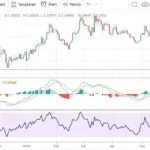Since its launch in 2015, Ethereum has been more than just a cryptocurrency—it has been the foundation for decentralized applications (dApps), smart contracts, and the entire DeFi (Decentralized Finance) movement. However, as the network grew, it faced major challenges: scalability issues, high gas fees, and energy inefficiency.
To address these problems, Ethereum has undergone one of the most significant transformations in blockchain history—Ethereum 2.0, also known as “The Merge.”
1. Transition From Proof-of-Work to Proof-of-Stake
The most revolutionary change in Ethereum 2.0 is its switch from Proof-of-Work (PoW) to Proof-of-Stake (PoS) consensus mechanism.
- Before (PoW): Mining required massive computational power, consuming large amounts of electricity.
- Now (PoS): Validators are chosen to confirm transactions based on the amount of ETH they stake, not their computing power.
This shift has reduced Ethereum’s energy consumption by more than 99%, making it far more sustainable and environmentally friendly.
2. Scalability Through Sharding and Layer-2 Solutions
One of Ethereum’s biggest criticisms was its limited transaction speed—roughly 15 transactions per second (TPS). Ethereum 2.0 aims to change that with sharding, a technique that splits the blockchain into smaller, interconnected chains called shards.
By processing transactions in parallel, Ethereum could eventually handle tens of thousands of TPS, rivaling traditional financial systems. Combined with Layer-2 solutions like Optimism and Arbitrum, users can expect faster and cheaper transactions.
3. Boosting Security and Decentralization
Ethereum 2.0 also enhances network security. In the PoS system, validators have a financial incentive to act honestly—if they cheat or go offline, their staked ETH can be slashed (lost).
With over 900,000 validators worldwide, Ethereum 2.0’s network is more decentralized and resilient than ever before, reducing risks of attacks and single points of failure.
4. Strengthening the DeFi and NFT Ecosystem
The upgrade has already started benefiting DeFi and NFT platforms built on Ethereum. Lower gas fees and faster confirmation times make transactions smoother and more accessible for users and developers.
As Ethereum 2.0 evolves, it could lead to mass adoption of blockchain technology across finance, gaming, digital art, and the metaverse.
5. The Road Ahead
Ethereum 2.0 isn’t a single event—it’s a long-term roadmap that continues to evolve. Future updates like “The Surge,” “The Verge,” and “The Purge” will further optimize performance, storage, and efficiency.
While competitors like Solana, Cardano, and Avalanche offer scalability, Ethereum’s massive developer community and robust ecosystem still give it a unique edge.
Conclusion
Ethereum 2.0 is more than an upgrade—it’s a transformation.
By solving long-standing issues of energy usage, scalability, and cost, it’s paving the way for a more sustainable and inclusive blockchain future.
As Ethereum continues to evolve, one thing is clear: the blockchain landscape will never be the same again.














